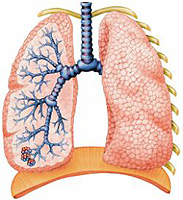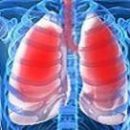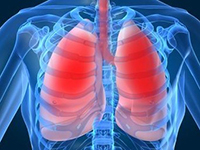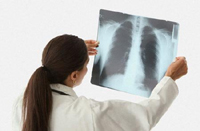What is a lung abscess? What are the symptoms of the lung abscess? How is the treatment of lung abscess? Answers to these questions you will find in the article.
Content
In the abscess of light, pathogenic pathogens, violation of bronchial patency, circulatory disorders and lymphorage, innervation in the damage zone. However, the main role belongs to the body's reactivity, for only with the decrease in immunity, these factors can cause an inflammatory-destructive process in lung.
Specific pathogel abscess lung no.
In the focus of the defeat, the white and golden hemolytic staphylococcus, green and hemolytic streptococcus, fuzzospirochetate flora, intestinal wand, anaerobic microbes, Bacillus Friedlander. Viruses, in particular influenza, also play a significant role. Thus, the bacterial flora can be described as a microbial-viral.
Light abscess symptoms
The absistration of pneumonium is usually happening by one of three options. With the first version 12-20 days after the start of pneumonia, after a sacrament of sharp phenomena and the apparent recovery, there is a significant deterioration: the temperature rises, the abundant purulent spawning begins with coughing again.
The second option: pneumonia takes a prolonged character and, after 20-30 days from the beginning of the disease, against the background of temperature rise, the amount of purulent sputum increases, and the cavity appears radiologically in the zone of inflammatory focus. In the third version, on the background of 1-2 weekly ailments, subfebrile temperature, the chest pain marks the rise of temperature to high digits, and after 2-3 days the patient begins to spill a wet. In such cases, sometimes they talk about the primary abscess of light.
A significant role in the pathogenesis of the lung abscess after sharp pneumonium plays a constantly growing number of patients with sustainable microbial flora to antibiotics.
The aspiral path of development of the lung abscess is associated with an outbreak of infection in the proportion of lung due to the corresponding bronchino bodies, vomit, blood, and gastric content. This path often takes place due to alcohol intoxication, diabetic coma, epilepsy, various injuries and surgical operations, especially on the head and neck.
 Much more rarely by the development of lung abscess is hematogenic-embolistic. With it, septic embball, having a blood flow into one of the branches of the pulmonary artery leads to the development of infact. In this zone, the purulent melting is coming quite quickly. Emumbic processes are developing with thrombophlebitis of deep veins of the heads and pelvis, septic endocarditis, osteomyelitis, postpartum sepsis. Throwing the thrombus and its drift in the vessels of the lungs can contribute operations on infected tissues.
Much more rarely by the development of lung abscess is hematogenic-embolistic. With it, septic embball, having a blood flow into one of the branches of the pulmonary artery leads to the development of infact. In this zone, the purulent melting is coming quite quickly. Emumbic processes are developing with thrombophlebitis of deep veins of the heads and pelvis, septic endocarditis, osteomyelitis, postpartum sepsis. Throwing the thrombus and its drift in the vessels of the lungs can contribute operations on infected tissues.
Split acute purulent, gangrene and chronic lung abscess. The disease occurs more often in men 30-50 years old, t. E. In persons who are more often smoked, consuming alcoholic beverages are subjected to overcooling.
A sharp purulent abscess of the lung in 75-80% of cases is solitary and localized in the right light segments. Large abscesses capture several segments of one share or different lobes.
During the abscess of lungs, two phases differ. The first phase is characterized by acute purulent inflammation and destruction of lung fabric without a breakthrough of purulent-necrotic masses in the lumen of the bronchial tree. Patients complain of chest pain, cough, general weakness, sweat, chills, lack of appetite, thirst. The temperature reaches high numbers. EE increases, the level of hemoglobin in the blood decreases, typical leukocytosis with a leukocytarial shift to the left. Radiologically detected rude infiltrative changes.
The second phase of the flow of acute abscess of the lung begins after the breakthrough of its contents in the lumen of the bronchi (on the 2-3rd week from the beginning of the disease). Temperature and other symptoms of intoxication decrease, leukocytosis decreases, SE is slowed down. Begins to depart Mocrota. X-ray in the light of massive infiltration begins to determine the cavity with a horizontal liquid level. With an early breakthrough and good emptying (with abscesses of upper fractions and intensive treatment), the purulent cavity can quickly decrease and then heave the scar. Sometimes a false cyst remains on the site of abscess (thin-walled cavity without signs of inflammation). With poor or insufficient emptying, which is more likely when the abscess localization in the middle share and lower bodies, the purulent-necrotic inflammation of the wall of the cavity and the surrounding pulmonary fabric does not have trends towards resistant sketching. Repetitive exacerbations arise, and after 2-3 months from the beginning of the disease, such an abscess loses inclination to healing, and goes into chronic.
The acute gangrenous abscess of the lung arises as a result of the gangrene began, which amazes only part of it. The initial lesion is localized in the upper part of the lung, but the process quickly spreads.
The disease proceeds very hard. Patients complain of chest pain, painful cough. Temperature of the body reaches 40 s. Skin cover dry, grayish color. Lips and Nail Falangi Shina. Radiographs are determined by large darkening areas of lung fabric. The liver is enlarged and slightly painful. In the analysis of urine, the appearance of protein. EE reaches 60-70 mm / h. In the blood there is very high leukocytosis with a shift of the formula to the left. After 10-15 days, the melting and rejection of necrotic masses begins. The amount of sputum can reach 1-1.5 l per day. Consistency It is thick, color brown, smell rotary. 70-75% of patients have hemochkali, pulmonary bleeding.
Treatment of lung abscess
With untimely intensive treatment or in its ineffectiveness, patients die from progressive intoxication or complications. Under the influence of complex intensive treatment, intoxication is gradually decreasing, breathing, blood circulation, metabolism, is normalized, the health of the patient is improved. However, there is always a residual cavity well visible on radiographs on the site of the gangrenous abscess. Despite the clinical well-being, the walls of such a residual cavity are covered with necrotic raid.
The flow and outcome of the lung abscesses are largely determined by the period and the intensity of therapy. The basic principles of therapy is the impact on infection, the drainage of the ulotnik and an increase in the resistance of the body. The impact on the infection is mainly carried out by the use of antibiotics.
Ideally, they must be selected with the nature and sensitivity of the microflora of the abscess, which is more often represented by staphylococcal and streptococcus, when the abscess transition into chronic becomes a polymorphic. To obtain a proper healing effect, you need to create a high concentration of antibiotics in the abscess zone. The drainage of the lung abscess is fundamentally possible in two ways - through bronchi and through the chest wall.
Patients with lung abscesses are almost always developing more or less pronounced metabolic disorders. For their correction and increase the resistance of the body, rational food with sufficient protein and vitamins are needed, the introduction of protein preparations (albumin, protein, amino-robin). Respiratory gymnastics, oxygen inhalation, intravenous infusion of 1% calcium chloride solution (400-800 ml), Purifection of pyrimidine derivatives (methyluracil, pentoxyl, orotat potassium), anabolic steroids (Nerochol, retabol). The use of immunotherapy (staphylococcal anatoxin, whey polyglobulin) is shown. The cure of chronic lung abscess can be achieved, as a rule, only by radical operation. It is advisable to operate during remission. In cases of contraindications to surgical treatment, the abscess cavity can occur periodically.









